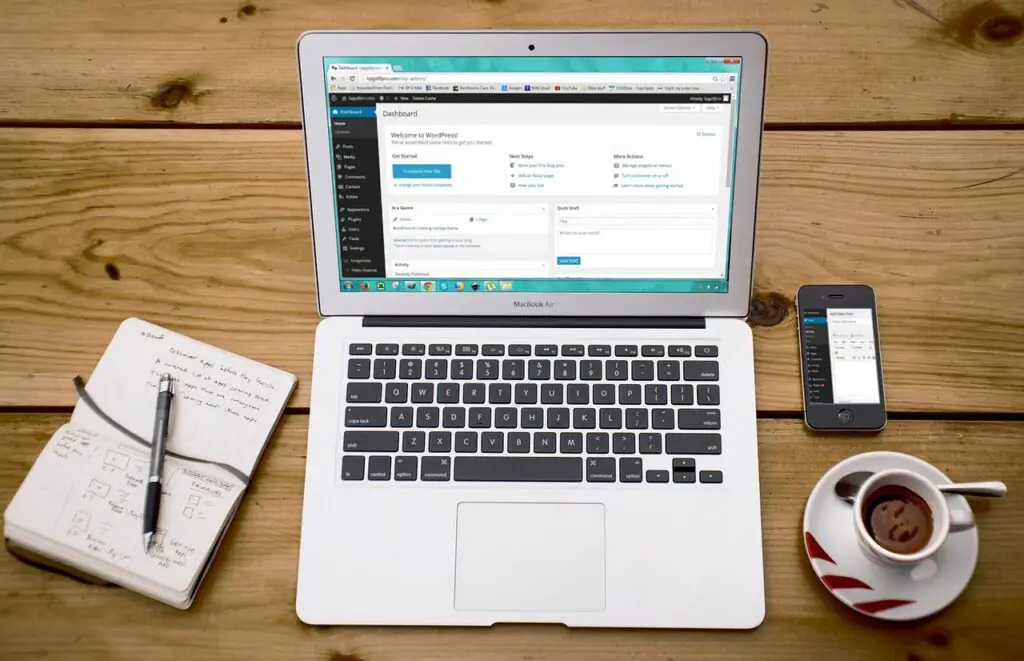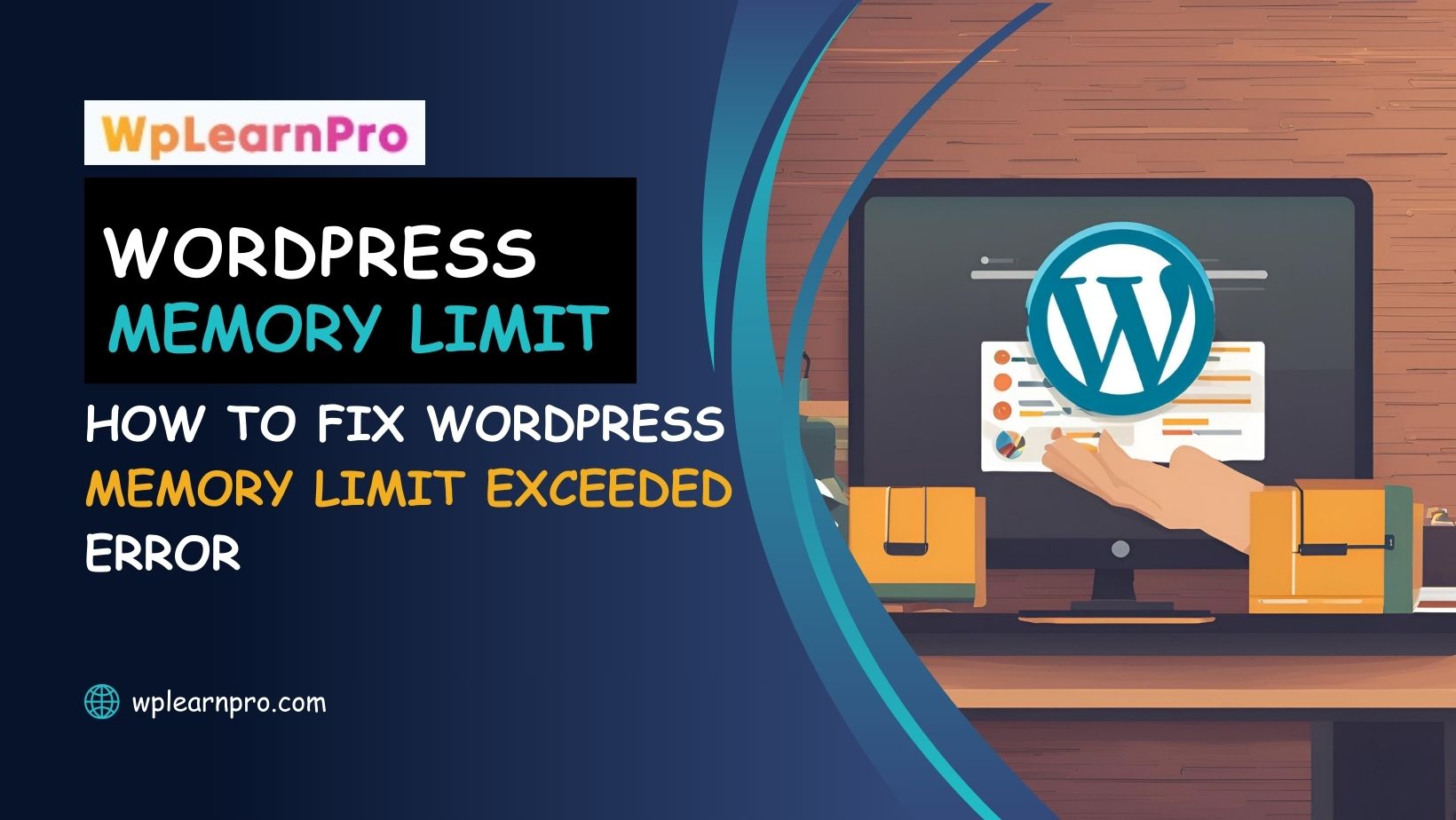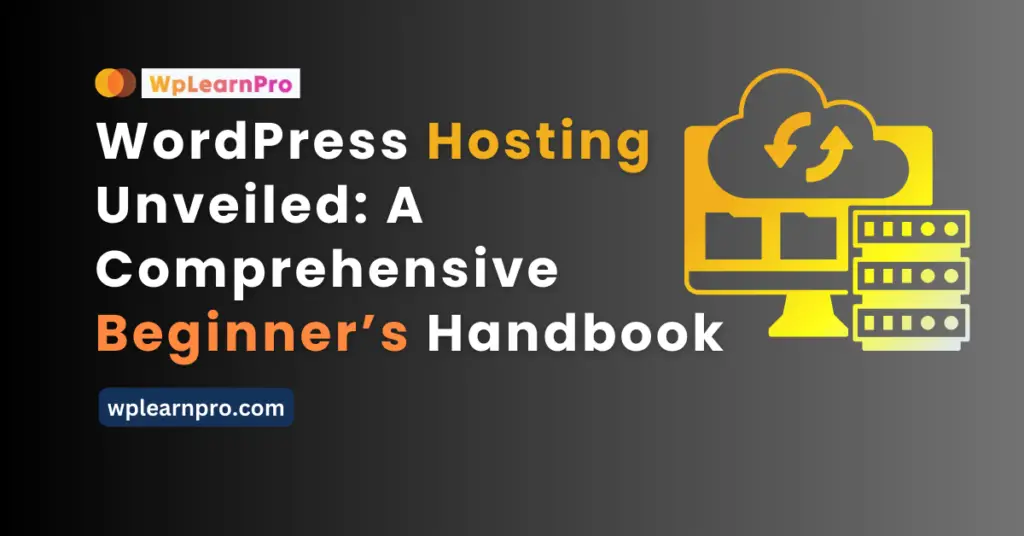Fix WordPress memory limit exceeded error, it can be a frustrating roadblock for website owners. This error happens when your WordPress website tries to use more memory than your server is set up to handle.
Table of Contents
ToggleIntroduction
When running a WordPress website, you might encounter a “Memory Limit Exceeded” error. This happens when your website uses more memory than your server allows, causing it to crash or slow down. Fixing this issue is important because it keeps your website running smoothly and ensures a good experience for your visitors.
In this article, we’ll explain why this error occurs and guide you through simple steps to fix it. You’ll also learn some tips to prevent it from happening in the future.
Understanding the WordPress Memory Limit Error
What is the WordPress Memory Limit?
The WordPress memory limit is essentially the maximum amount of memory that PHP scripts on your site are allowed to consume. By default, this limit is often set by your hosting provider, but it can sometimes be too low for your needs, especially as your site grows.
WordPress, like any software, requires a certain amount of memory to operate. This memory is used to process requests, load plugins, and handle various tasks. The memory limit is a parameter set by your hosting provider that defines the maximum amount of memory PHP, the language WordPress is built on, can use.
What Causes the Memory Limit Exceeded Error?
Several factors can contribute to this error:
- Resource-intensive plugins: Some plugins, especially those handling large datasets or complex operations, can consume excessive memory.
- Large image files: Uploading and processing large images can strain your server’s resources.
- Inefficient code: Poorly coded themes or plugins can lead to memory leaks or inefficient resource usage.
- High traffic: A sudden surge in website traffic can overwhelm your server’s capacity.
- Insufficient server resources: Your hosting plan might not provide enough memory for your website’s needs.
- Too many plugins: Each plugin you add to your site consumes memory.
- Heavy themes: Some themes are resource-intensive and can push your site over its memory limit.
- Large media files: Uploading high-resolution images or videos can quickly eat up available memory.
- Poor hosting environment: Shared hosting plans often have lower memory limits, which can cause issues as your site grows.
Signs That Your WordPress Site is Hitting the Memory Limit Exceeded
How can you tell if your site is running into memory issues? Here are a few warning signs:
- Slow loading times: If your site is slower than usual, it could be due to insufficient memory.
- 500 Internal Server Error: This generic error can sometimes indicate a memory limit issue.
- White screen of death: If you encounter a blank white screen, it’s a clear sign that something is wrong, often related to memory.

Checking the Current WordPress Memory Limit
Before you start making changes, it’s important to know what your current memory limit is. You can easily check this from your WordPress dashboard:
- Navigate to Tools > Site Health.
- Click on Info and expand the Server section.
- Look for PHP memory limit—this will show you the current memory allocation.
Using cPanel to Check Memory Usage
If you have access to cPanel, you can also check your site’s memory usage there:
- Log in to cPanel and go to Metrics > Resource Usage.
- Review the memory usage graph to see if you’re close to hitting your limit.
Accessing the Memory Limit via wp-config.php
Another way to check your memory limit is by looking directly in the wp-config.php file. This file contains important configuration settings for your WordPress site.
- Use an FTP client or cPanel’s File Manager to access your site’s files.
- Locate and open the wp-config.php file.
- Search for the line that sets the memory limit, often starting with
define('WP_MEMORY_LIMIT', 'XXM');
Increasing the WordPress Memory Limit
Method 1: Editing wp-config.php
One of the simplest ways to increase your WordPress memory limit is by editing the wp-config.php file.
- Access your site’s files via FTP or File Manager.
- Locate the wp-config.php file in the root directory.
- Open the file in a text editor and add the following line just before the “That’s all, stop editing!” comment:
define('WP_MEMORY_LIMIT', '256M');
- Save the file and re-upload it to your server.
Method 2: Modifying the .htaccess File
Another way to increase the memory limit is by modifying the .htaccess file.
- Locate the .htaccess file in your site’s root directory.
- Open it in a text editor and add the following line:
- Save and re-upload the file to your server.
php_value memory_limit 256M
Method 3: Adjusting PHP.ini Settings
If you have access to the PHP.ini file, you can increase the memory limit from there as well.
- Find the PHP.ini file on your server. It’s usually located in the /etc/ directory.
- Open the file and look for the line that starts with
memory_limit. - Change the value to 256M (or higher, if needed):
memory_limit = 256M
- Save the changes and restart your server.

Best Practices to Avoid WordPress Memory Limit
Optimizing WordPress Themes and Plugins
Choosing lightweight, well-coded themes and plugins can significantly reduce memory usage. Always opt for themes and plugins that are regularly updated and have good reviews.
Regularly Updating Core, Themes, and Plugins
Keeping your WordPress core, themes, and plugins up-to-date is essential. Updates often include performance improvements that can reduce memory usage.
Monitoring Resource Usage
Use tools like WP-Optimize or Query Monitor to keep an eye on your site’s resource usage. This will help you identify potential memory issues before they cause errors.
Troubleshooting Memory Limit for WordPress
Disabling Plugins to Isolate Issues
If you’re facing memory limit errors, try disabling all plugins and re-enabling them one by one to isolate the culprit. Sometimes, a single plugin can be responsible for the issue.
Reverting to a Default Theme
Switching to a default WordPress theme (like Twenty Twenty-One) can help determine if your current theme is causing memory issues.
Using Debug Mode in WordPress
Enable debug mode in WordPress by adding the following line to your wp-config.php file:
define('WP_DEBUG', true);
Advanced Techniques to Fix WordPress memory limit
Increasing PHP Memory Limits via Hosting Panel
Many hosting providers allow you to increase the PHP memory limit through the hosting control panel. Look for a “PHP Settings” or “Server Configuration” option.
Using a Managed Hosting Solution
Managed WordPress hosting often includes automatic scaling, which can prevent memory limit errors. Providers like WP Engine or Kinsta offer optimized environments tailored for WordPress.
Utilizing a CDN to Offload Resources
A Content Delivery Network (CDN) can help offload resources like images and scripts, reducing the memory load on your server.

What to Do If the Error Persists
Contacting Your Hosting Provider
If increasing the memory limit doesn’t resolve the issue, it’s a good idea to contact your hosting provider. They may be able to adjust server settings or recommend a better hosting plan.
Upgrading Your Hosting Plan
If your site has outgrown its current hosting plan, consider upgrading to a plan that offers more memory and resources. VPS or dedicated hosting plans are good options for growing sites.
Using a WordPress Memory Limit Plugin
There are several plugins available that can help manage your site’s memory usage and prevent memory limit errors. These plugins can automatically optimize your site’s memory settings.
Preventing Future Memory Limit Issues
Regularly Updating Themes and Plugins
Keeping your themes and plugins up to date ensures they are optimized for performance and memory usage. Outdated themes and plugins can be a drain on your site’s resources.
Optimizing Media Files
Before uploading images and videos to your site, be sure to optimize them for web use. This can significantly reduce the amount of memory they consume.
Monitoring Website Performance
Regularly monitoring your site’s performance can help you catch memory issues before they become a problem. Use tools like Google PageSpeed Insights or GTmetrix to keep an eye on your site’s health.
Common Mistakes When Trying to Fix the Memory Limit Exceeded Error
Incorrect File Paths
When editing files like wp-config.php or .htaccess, be sure you’re working with the correct file paths. Editing the wrong file can lead to further issues.
Overwriting Critical Files
Be cautious when making changes to critical files. Always back up your site before making edits to ensure you can recover if something goes wrong.
Ignoring Server Configurations
Sometimes the issue isn’t with WordPress itself but with the server configuration. Make sure your server is properly configured to handle the memory needs of your site.
How to Choose the Right Hosting Plan for Your Needs
Shared vs. VPS vs. Dedicated Hosting
Choosing the right hosting plan is crucial to prevent memory limit issues. Shared hosting is budget-friendly but comes with lower memory limits. VPS and dedicated hosting plans offer more resources but come at a higher cost.
Evaluating Memory Requirements
Consider the size and complexity of your site when evaluating your memory requirements. Larger sites with heavy traffic will need more memory to function smoothly.
Reading Hosting Reviews
Before choosing a hosting provider, read reviews to find out how well they handle memory issues and customer support. A good host will have a track record of helping clients manage and optimize their site’s memory usage.
Conclusion
Fixing the WordPress memory limit exceeded error doesn’t have to be a daunting task. By understanding the causes of the issue and following the steps outlined in this guide, you can quickly resolve the problem and keep your site running smoothly.
Remember to regularly monitor your site’s performance and make adjustments as needed to prevent future issues.
FAQs
What is the ideal memory limit for WordPress?
The ideal memory limit for WordPress varies depending on the size and complexity of your site. For most sites, 256M is sufficient, but larger sites may require more.
Can I increase the memory limit without accessing the server?
Yes, you can increase the memory limit by editing the wp-config.php file directly from your WordPress dashboard using a file manager plugin.
How do I know if my memory limit is too low?
If you experience slow loading times, frequent errors, or the white screen of death, your memory limit may be too low.
Will increasing the memory limit slow down my site?
Increasing the memory limit can actually improve your site’s performance by allowing it to handle more tasks without running into errors.
Are there risks involved in increasing the memory limit?
The primary risk is making incorrect changes to critical files, which could cause your site to malfunction. Always back up your site before making any changes.


